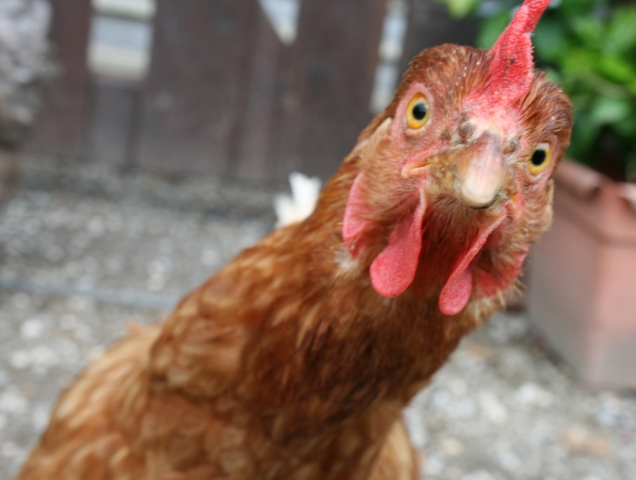Fowl play at council - urban chicken project takes wing
It’s official – the urban chicken pilot project in Castlegar is set to soar, after city council’s regular meeting Monday night.
But it won’t be a poultry free-for-all, and not everyone with a hen yen can fly out and buy birds. A key element of the project will be a steering committee involving members from SPCA, Bear Aware, IHA, and Conservation, as well as individuals with experience in poultry husbandry, such as the owner of FlusterCluck Farms.
“The applications will be quite stringent, and there will be backyard checks and enforcement,” said councillor Deb McIntosh, adding it will be an 18-month pilot project allowing only up to seven residential property owners to participate, beginning March 1, 2017.
“The reason we chose seven is that our community is kind of elongated, and we wanted make sure we got a good sample from different areas in the community,” said councillor Florio Vassilakakis, adding city director of Planning and Development Phil Markin did extensive research on other communities with urban chickens, seeking out best practices that can be applied here (see guidelines listed below).
Councillors Dan Rye and Sue Heaton-Sherstobitoff voted in favour, but also requested a public meeting before the project is implemented.
The only vote against the proposal came from Mayor Lawrence Chernoff.
“I see a bunch of issues here,” Chernoff said. “My number one is safety. A wire fence will not stop a bear. And how you use electricity in a backyard is critical, because there are kids everywhere.”
He also expressed concern that the project relies so heavily on volunteer participation, suggesting that might wane, leaving the project to “fizzle out”.
The guidelines, as laid out by Markin in his report to council, are as follows:
Staff are suggesting that the following basic guidelines be incorporated for the pilot project:
· Five hens maximum per eligible household;
· Notification be provided to all immediate neighbours;
· Hen Coop shall not be visible from the street. The hen structure/enclosure shall be sited to the rear of the principal building, be setback from any property lines and be constructed in a way to eliminate infiltration from predatory animals and rodents and sound attenuation;
· Urban hens are restricted to properties with one single detached dwelling;
· No roosters are permitted;
· Proper cleaning and animal husbandry must be followed at all times;
· Hens may not be slaughtered on site;
· Chickens must be kept in a hen house without access to the larger enclosure at night;
· All hens must be at least four months old;
· Coops and pens maximum 10m² (107 sq ft.) and 2 meters (6’-7’) in height;
· Housing requirements – minimum 0.37m² (4 square feet) coop space and 0.92 m² (10 sq ft) enclosed run space per hen, coop structures must be roofed, approximate 15cm (7”) perch for each hen and one nest box;
· Electric fencing requirements –
Hens must be contained at all times, enclosed by an electric fence with minimum distance one metre from electric fence to coop/pen.
In the case of electric security fencing to prevent wildlife from accessing urban hens:
a) Urban hen coops and pens must be surrounded by electric security fencing at a minimum distance of one metre from hen coop, pen.
b) A minimum of six strands of 12.5 gauge high tensile galvanized wire is required, with the bottom wire no more than 5 cm from the ground and subsequent wires spaced at an interval of no greater than 25 cm apart, with alternating positive and negative strands, with the top wire at the height of no less than 110cm from the ground.
c) Electric fence shall be programmed to a minimum conduction of 6000 volts to a maximum of 10,000 volts.
d) Corner posts and gate areas must be braced to ensure posts will not bend or pull from the ground when the wire is pulled to the appropriate tension. Install guy wires or inside angle braces to alleviate any tightening/loosening problems, and
e) Ground the system using three (3) 16mm ground rods, 2-3m deep and spaced at least
three (3)m apart, connected to the negative output terminal of the fence charger by ground
clamps. Place the rods in moist soil when available which insures a good ground.























